
11 minute read
TRANSPORTATION
TRANSPORTATION CALIFORNIA SPEAKS TO 2020 PRIORITIES AS IT RELATES TO SB 1 FUNDING
By Brian Hoover, Construction Marketing Services, LLC
alifornia maintains almost 400,000 lanemiles of freeways, highways, local streets and roads, along with 25,000-plus bridges. According to the 24th Annual Highway Report by Reason Foundation, the California highway system ranks 43rd in the nation in overall cost-effectiveness and condition. The Golden State is in the bottom 10 of all states in 7 of the 13 total metrics. This includes a ranking of 48th in traffic congestion, 47th in urban interstate pavement condition, 45th in rural interstate pavement condition, 49th in urban arterial pavement condition, and 40th in spending per mile.
These rankings are not surprising when you consider that vehicle travel has grown 10 times faster than lane capacity over the past 10 years. California’s roadways carry 1.3 billion tons of freight annually, while residents continue to drive more than 300 billion miles each year on these state roads. The lifeblood of California’s economy relies on the continued well-being of its transportation system, and that requires continued adequate investment. California Legislators signed Senate Bill 1 (SB 1) into law April 28, 2017, to repair roads and bridges, improve public safety, and to expand public transit systems. SB 1, also known as the Road Repair and Accountability Act of 2017, invests approximately $54 billion over the next decade, C
but who is ensuring that SB 1 is honored and implemented as passed by Legislature and signed by Governor Brown.
Transportation California was formed in 1990 as a not-for-profit 501 (c)(4) organization to support Propositions 108 and 111, which created the Transportation Blueprint for the last decade of the 20th century. For the past several decades, Transportation California has worked in concert with a broad coalition of labor, management, local governments, and others to address the need for greater investment in California’s transportation system. Transportation California is also now fully engaged in the implementation of SB 1 while defending and protecting the landmark legislation against attacks or misuse. They remain
vigilant and continually monitor legislative, budget, and regulatory proposals to ensure that they do not weaken SB 1 and its ability to deliver on the promises made to tax-payers and voters.
As the Executive Director of Transportation California, Kiana Valentine has more than 15 years of policy experience in transportation, housing, land use and local government issues. With a deep understanding of transportation policy and funding, she has played a role in the passage and implementation of all major state transportation policy and funding decisions for more than a decade including Proposition 1B (2006, $19.9 billion transportation bond), the 2010 transportation fuel tax swap, and most recently the successful passage of SB 1 – the

Above: Kiana Valentine, Executive Director of Transportation California.
Below: Mark Watts, Legislative Advocate of Transportation California.

Road Repair and Accountability Act of 2017 and the defeat of Proposition 6 on the November 2018 ballot.
“I think everyone is familiar with the history and amount of effort that has gone into advocating, negotiating, passing, and then protecting SB 1 here in California,” says Valentine. “SB 1 was more than just a financial package for transportation. It was more than just fee and tax increases to fund our infrastructure. It also included historic, significant transparency and accountability provisions that have never been applied to transportation funding this broadly in the past.”
Valentine points out that SB 1 was also historic for other essential reasons. “Cities and counties are required to adopt local street and road plans to show how they intend to spend their share of SB 1 in a given fiscal year, every single year. Then at the end of the fiscal year, they must come back and present an accurate report on how they spent that money. This is significant in that it should provide the public, the industry, and the elected officials with a way to hold local governments accountable to every single dollar of SB 1 funding,” says Valentine. “Additionally, at the state level, the California Transportation Commission has to adopt guidelines and hold workshops and implement programs in a public setting so that all stakeholders have the opportunity to provide input into how SB 1 funding is spent. In my experience since SB 1 was passed, we have had significant transparency and accountability across all of the individual programs.”
Mark Watts is the legislative advocate for Transportation California, as well as a partner at Smith, Watts & Hartmann, an advocacy and consulting firm that specializes in transportation project funding and implementation. “In the past year and a half, Mark and I have realized that Senate Bill 1 does not require the state or any entity for that matter to perform a comprehensive report on the impact of SB 1 across all modes, across all programs, at any given point and time,” says Valentine. “We think it is imperative that someone or something be in place to answer a question from the media, an elective official, or an active member within this industry.” Valentine points to a hypothetical situation of where 500 projects have gone out to bid, and 340 have been awarded. Additionally, $5 billion has been expended, and another $300 million are in progress. These are milestones that Valentine says the public should have access to and not just markers that are announced from program to program.
Mark Watts further defines this idea of specific and allencompassing accountability. “I think it is more of a refinement of the approach. I don’t think we are being critical of what is currently offered, but I do think they have missed the mark in terms of the accessibility of overall gross data. It is coming in stovepipe after stovepipe, and we would like to see the data go into one big chamber.” So, according to Valentine, this full accountability approach is one of their priorities for the 2020 legislative year. “We learn lessons as we go along on how to improve on SB 1 transparency and accountability, continues Valentine. “We want this information to be easily accessible and easy to understand by a wide variety of audiences.”
StateTransportation Revenues Have Increased (In Billions)
$1 4
1 2
1 0
8 Road Improvement Fee
Transportation Improvement Fee
Diesel Sales Tax
Diesel Excise Tax
Gasoline Excise Tax
Weight Fees
6
4
2 SB 1 in Effect
201 1 -1 2 201 2-1 3 201 3-1 4 201 4-1 5 201 5-1 6 201 6-1 7 201 7-1 8 201 8-1 9 201 9-20 (Estimated) 2020-21 (Proposed)
SB = Senate Bill.
The 2020-21 State Budget and the Further Implementation of SB 1
Governor Gavin Newsom submitted his 2020-21 State Budget proposal to the Legislature Jan. 10, 2020. For transportation programs, the budget reflects a continuing adherence to the programmatic focus within the programs funded through SB 1 of 2017. Valentine says that protecting SB 1 every single year going forward is another top priority for Transportation California, as they continue to serve a variety of stakeholders like CalCIMA and their members. “Last year, we saw the Governor’s January budget proposal want to leverage or link SB 1 funding to housing production. This year’s budget proposal had none of those types of proposals,” says Valentine. “From my perspective, it is a clean budget. So, it is business as usual as far as implementing SB 1 as adopted by the Legislature and protected by the voters,” continues Valentine. “I think this year’s budget may look like this for a couple of reasons.” Valentine points to the fact that the transportation industry, in general, pushed back hard on proposals that could potentially take away or divert SB 1 funds. She also sees the appointment of a new Caltrans Director and a new California Transportation Agency Secretary as a positive move toward continued transportation advancement methods and sustainability.
Toks Omishakin was appointed the 33rd Director of the California Department of Transportation (Caltrans) by Governor Gavin Newsom and sworn in October 2019. a
Programs can involve a combination of state highway, local street and road, and transit programs. SB 1 Revenues Mostly Support State Highways and Local Streets and Roads Figure 4
State Highways Local Streets and Roads Transit Trade and Congested Corridors a Other 2020-21
Total = $5 Billion SB = Senate Bill.
David S. Kim became the third Secretary of the California State Transportation Agency (CalSTA) July 1, 2019, following his appointment by Governor Newsom April 2019.
Toks came to Caltrans following eight years with the Tennessee Department of Transportation (TDOT), where he successfully established environmental, multimodal, and planning policies to make TDOT one of the best DOTs in the country. Kim is a longtime transportation leader with experience in the private sector as well as all three levels of government. He served as vice president, Government Affairs for Hyundai Motor Company from 2017-2019, and spent nearly eight years in senior-level roles at the U.S. Department of Transportation. “Both of these veteran transportation [ Continued on page 11 ]
NEW CRUSH IT


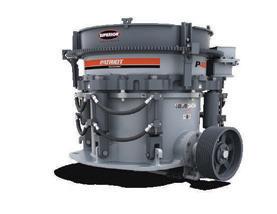


LIBERTY JAW CRUSHER
PATRIOT CONE CRUSHER
VALOR VERTICAL SHAFT IMPACTOR
SENTRY HORIZONTAL SHAFT IMPACTOR
Building better crushers means going beyond the nuts and bolts. You told us you need experienced application advice, so we assembled industry veterans with hundreds of years of know-how. You asked for well-stocked wears and spares and we invested in inventory...lots of inventory! Most importantly, you desperately wanted dependable service. We built our brand on extraordinary customer support and we’re proudly bringing it back to a neglected crushing sector!
For more information, contact Brad Critchfield: (320) 287-0578 brad.critchfield@superior-ind.com


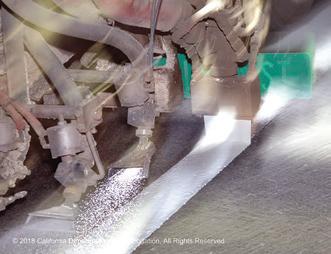

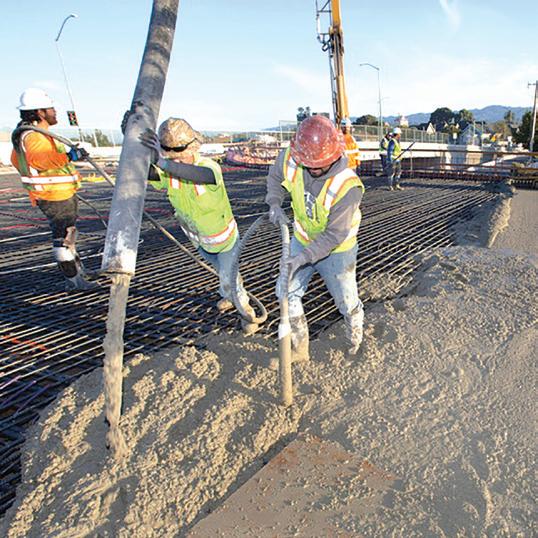
VARIOUS SB 1 PROJECTS THROUGHOUT THE STATE.


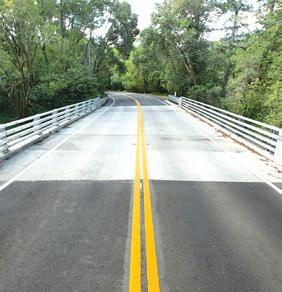
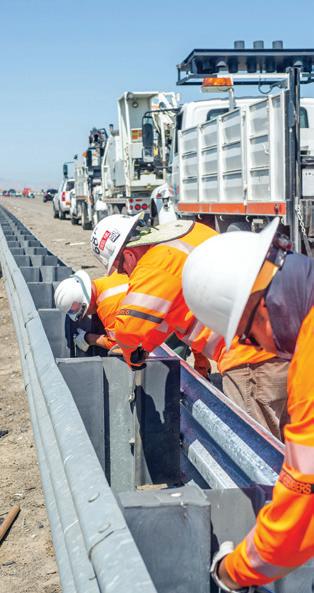
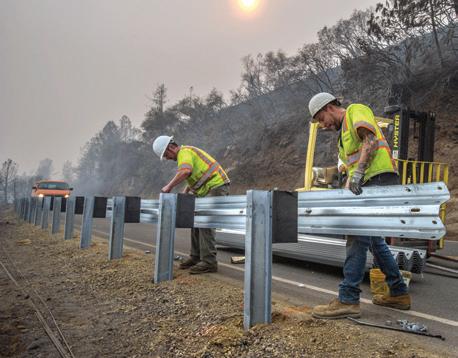
[ Continued from page 8 ] officials are committed to transportation infrastructure investments, and I think that under their leadership, we are going to see great things happen going forward,” says Valentine.
How Has SB 1 Revenue Been Spent to Date and How Will California See it Roll Out in the Future?
Valentine says that SB 1 generated approximately $2.8 billion in 2018 and that the forecast for 2020 is $4.7 billion. “At the end of fiscal year 2026-27, that number should rise to more than $7 billion, continues Valentine. “It is my guess that during this fiscal year and the next fiscal year, we are going to be able to see whether agencies are implementing at their full capacity. If we generate $5.4 billion, is $5.4 billion going out the door? We will have some better metrics by then.” Watts reminds us that there is always a lag with these big capital projects because the money is spent over two, three, or even four years. “We will see the dollar amounts contracted and the personnel directed, but the cash flow will not quite match up,” says Watts. “The key metric going forward will be the released contracts and the direction of personnel.”
Watts thinks it is important that we remember that initially, the SB 1 programs were focused on Fix-It-First. “Admittedly, some of the revenue has gone to rail, transit, and the Complete Streets program, but the bulk was dedicated to the Fix-It-First initiative on the state and local level. Now those funds are going out the door per the statute, as is the remainder of the money. So, it is not as if the road maintenance
The Conveyor • 2020 Winter Issue Figure 4
Trade and Congested Corridors a
Other
State Highways
Transit
Total = $5 Billion
Local Streets and Roads
a
Programs can involve a combination of state highway, local street and road, and transit programs.
SB = Senate Bill.
repair money can go to some other new or diverse program,” says Watts. “These funds are going toward fixing our state highways and local roads by and large. I think we are settled into these programs going forward that will continue to meet the SB 1 challenges.”
Valentine points to the fact that the first year of SB 1 implementation was only half of a fiscal year. “During this time, various taxes and fees were phased in, so we won’t even realize full funding until July 1 of this year when we see the zeroemission vehicle fee attached to registrations going forward,” says Valentine. “So, we are not even at full implementation as we speak. The 2020-21 budget fiscal year is going to be the first full year of implementation, and we should look 10 years out from this point to get to a number of $54 billion.” Transportation California is uniquely positioned in the State Capitol to lead the industry in the ongoing task of ensuring SB 1. They hold firmly to their mission to develop adequate, dedicated, and sustainable funding to properly maintain California’s transportation infrastructure and build the transportation system of the future.
For more information on Transportation California, please visit their website at www.transportationca.com or call their Sacramento offices at (916) 446-1280. For a link to Governor Newsom’s 2020-21 State Budget Proposal, please visit https://www.gov.ca.gov/2020/ 01/10/governor-newsomproposes-2020-21-state-budget/ n






